Excerpts from Jim Conrad's
Naturalist Newsletter
Issued on March 2, 2020, from the forest just west of Tepakán; elev. ~9m (~30 ft), N21.053°, W89.052°; north-central Yucatán state, MÉXICO
African Bermuda-grass
Two young Maya brothers tend about 25 sheep on a rancho near this one. One day they invited me over to see their sheep, but what got my attention was the grass the sheep were foraging in, shown below:
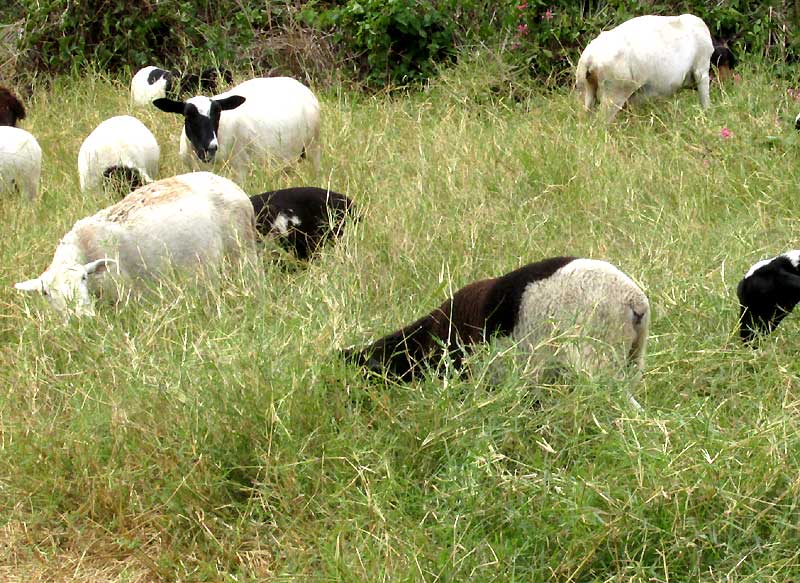
The brothers were proud of both sheep and grass, saying that they'd been given a small piece of sod, had heard that sheep love it, and that they'd been afraid it wouldn't grow on their land. However, it quickly rooted, put out new sprouts and before long completely occupied their little pasture, as shown. And the sheep do crave it, even as the grass just keeps growing and spreading.
I'd seen the grass growing in several places in the area, always forming dense tangles as shown above, and always highly regarded as livestock forage. I was told that it was called Estrella, which is Spanish for "star," but that didn't help much with my interest in knowing its technical name. For nearly a year I've watched for flowering plants, so I could ID the grass, but there hasn't been any -- until now. At the brothers', a very few stems were tipped with old flowering heads. One such stem is shown below:
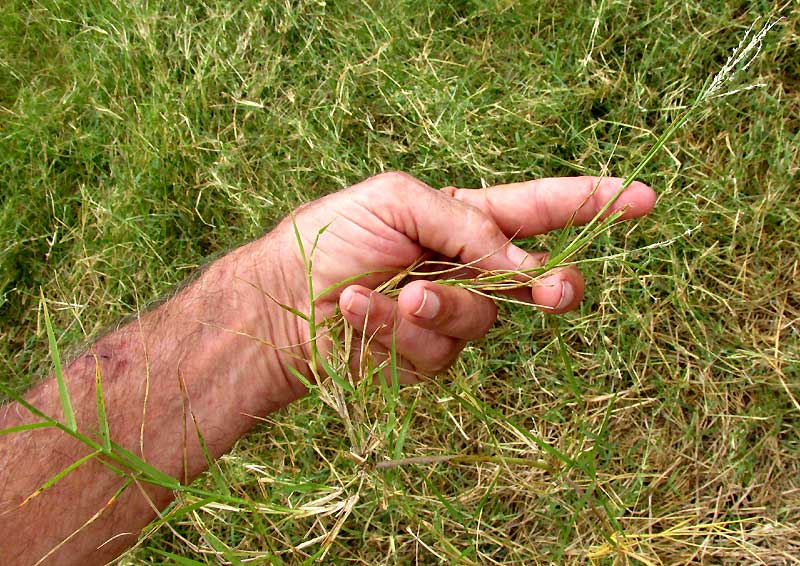
Note at the image's lower, left how the short blades alternate on the stem, in two rows. Breaking this stem from the mother plant was hard because the stems are remarkably tough. They'll trip you if you're not careful. The flowering head is shown below:
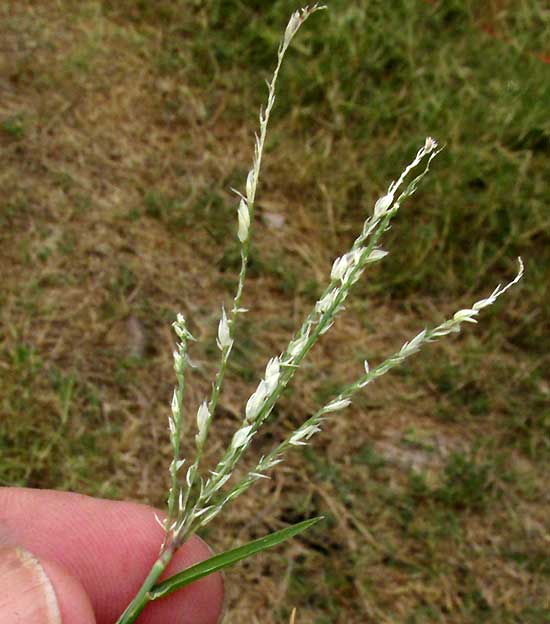
Consisting of several racemes with spikelets all on one side of each rachis, and the racemes all arising at or near the stem's tip helps a lot with the ID. It's in the crabgrass/Bermuda-grass cluster of species. Unfortunately, the flowers were old and the caryopsis-type fruits already had fallen. Still, we can see that the disarticulating florets leave their glumes on the rachises, and see the glumes' size and shape, shown below:
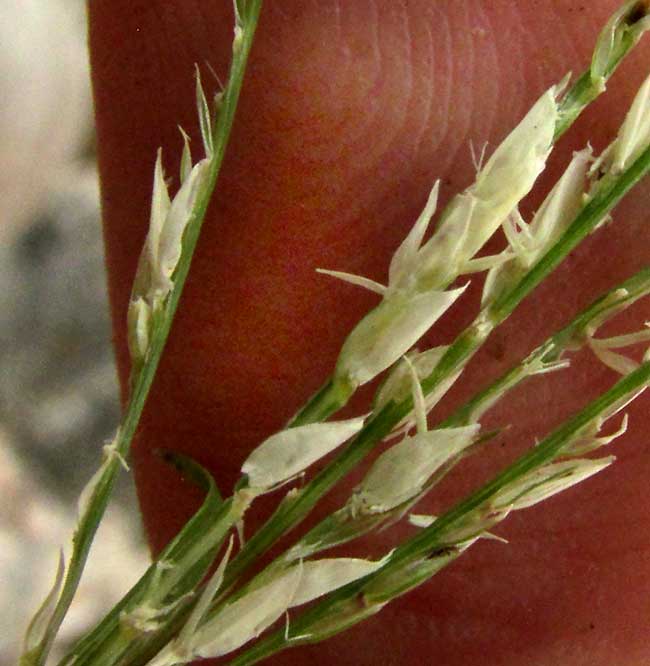
It's always a good idea to notice a grass's ligules, shown below:
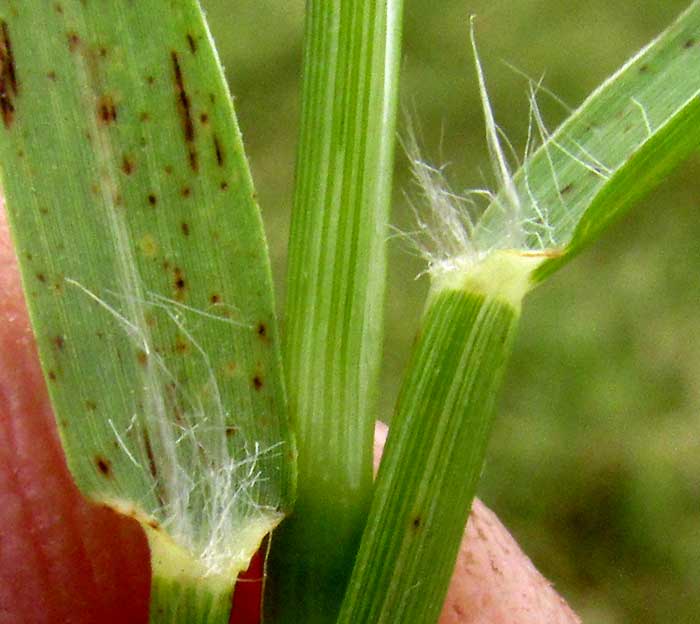
Also, the tough stems sprouted tufts of smaller stems at their nodes, shown below:
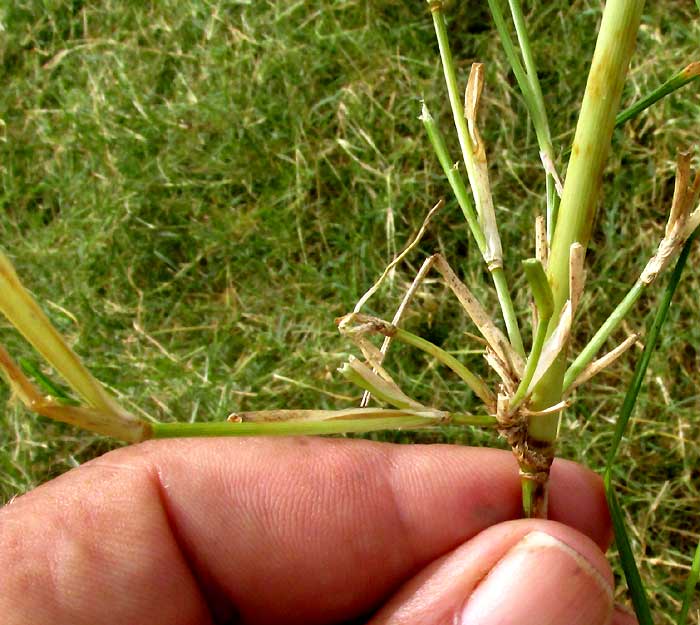
All these features quickly brought us to African Bermuda-grass, CYNODON NLEMFUENSIS, native to much of central Africa, but introduced as a forage and silage crop throughout much of the world's tropical and subtropical regions, and often becoming invasive, forming almost pure stands of its entangled stems. Once established, it's hard to get rid of because it re-sprouts from remnant stolons and rooted runners.
Beyond that, African Bermuda-grass is remarkably tough and adaptive. It can survive 2-3 days of waterlogging, and tolerates drought, enabling it to survive our severe dry seasons. One reason it grows so fast is that during photosynthesis it uses the C4 Carbon Fixation Pathway, which under conditions of drought, high temperatures, and limited nitrogen or CO2 access, is more efficient than the C3 Pathway used by about 99% of the Earth's known plant species.
As global warming stresses the planet's biospheres, African Bermuda-grass is one species that may be able to hold its own.